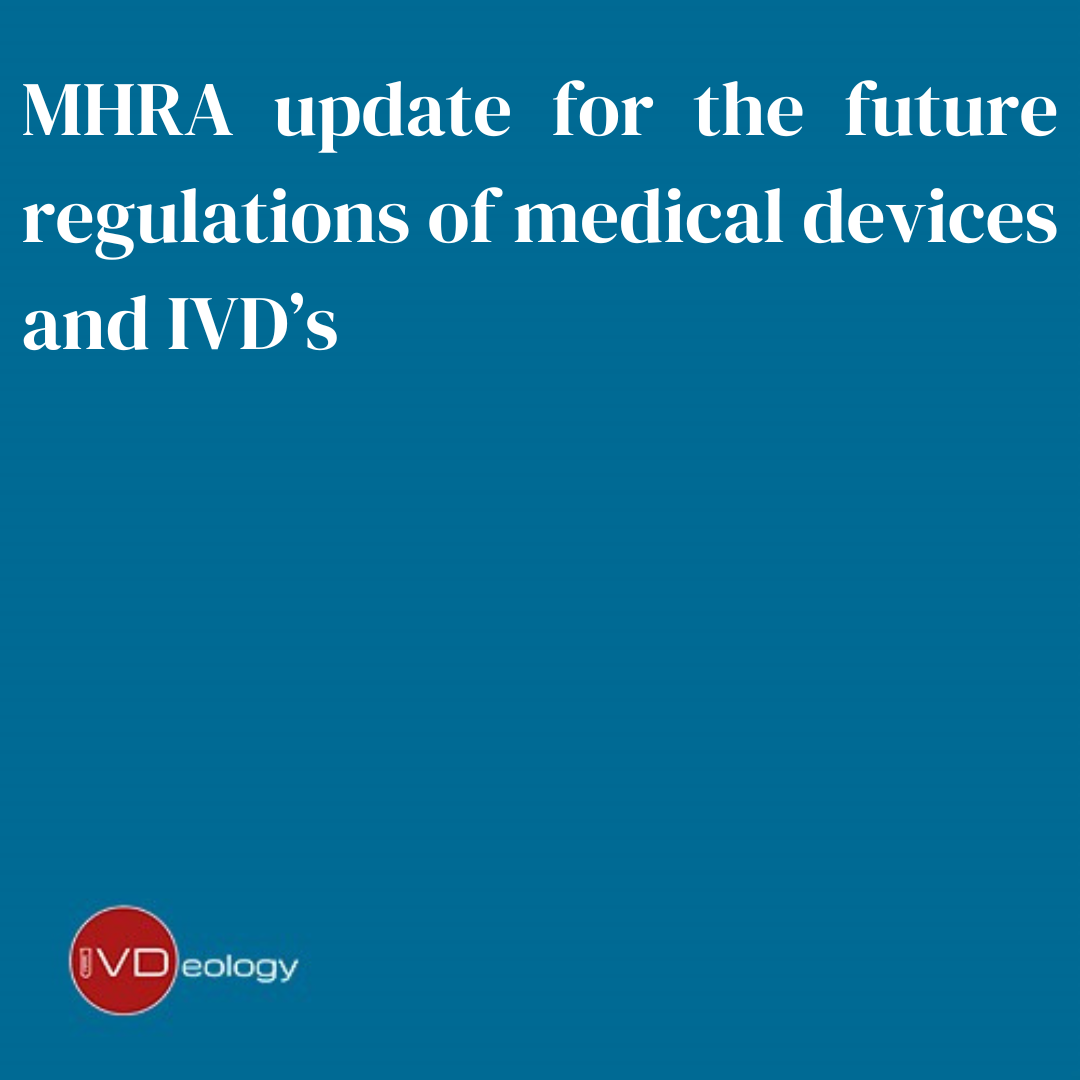
The MHRA held a webinar on March 5th to give an insight into the plans for the future UK regulations for medical devices and IVDs.
The key points for IVDs they made are:
· The definition of IVD will be extended to mirror the definition in the IVDR.
· Devices will be classified into 4 groups, A-D, using a risk based approach. Device classification will follow the IMDRF guidance N64 document – Principles of In Vitro Diagnostic (IVD) Medical Devices Classification, with a couple of UK specifics:
o Devices which monitor infectious loads of life-threatening infectious diseases will be classified as Class D
o Devices with the intended purpose for screening, detecting or diagnosing either neurodegenerative diseases or cardio vascular diseases will be classified as Class C.
Accessories, Independent Software and Companion diagnostics will be classified in their own right. Software that drives a device, calibrators and controls will be classified in the same group as the associated device.
· The Essential Requirements will be updated to generally align with the GSPR under IVDR with differences to reflect the UK specific legislation & national bodies.
o This includes alignment for the requirements for labelling and instructions for use.
The take home message we took away was that they are trying to harmonise with the IMDRF model and the EU IVDR wherever possible to try and reduce the burden on manufacturers whilst still ensuring that the devices on the GB market are safe and effective for users and patients.
Whilst this is good news for manufacturers as a whole and for many they may see very little difference between the UK and EU regulations. However for other manufacturers their devices may end up being classified differently in each regulation. What potential challenges may these differences in classification cause?
As the essential requirements will align, the impact for the technical file will hopefully be minimal. And following the IMDRF model may have advantages too – aligning with other key markets such as Canada and Australia. However differing classifications may have an impact on Post Market Surveillance and whether a PMS report or a Periodic Safety Update Report is required. It may also give notified bodies/UK approved bodies more work as they will have to consider how the differences in classification impact their role. What may the impact on market access be if we diverge from the EU when we know our market are closely linked? We would love to hear some thoughts.
Written by Fiona Thompson – RA specialist at IVDeology
